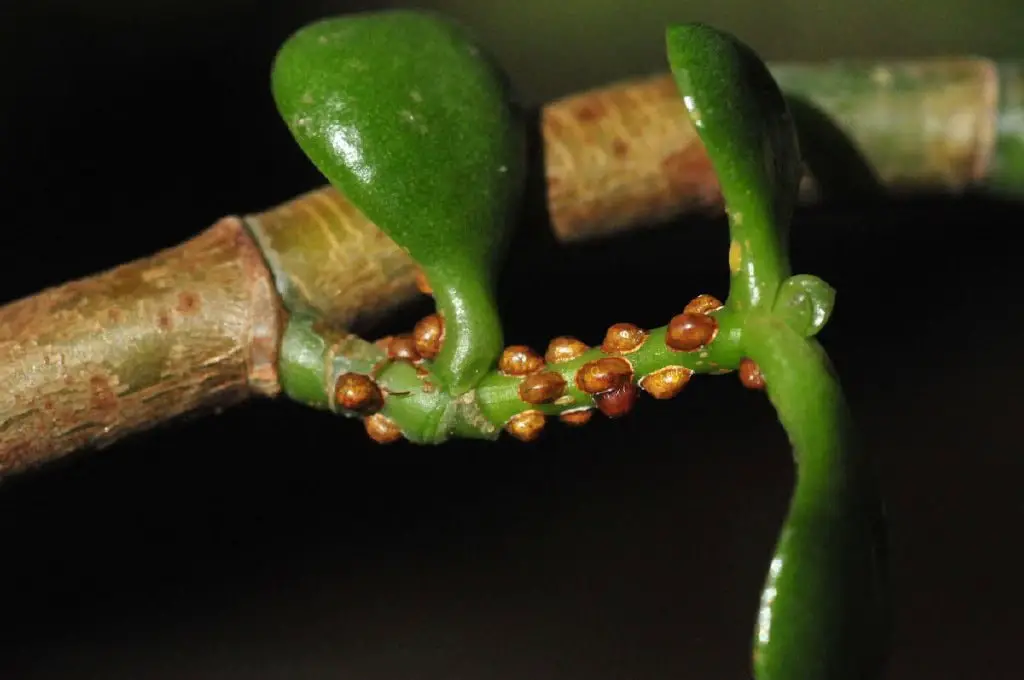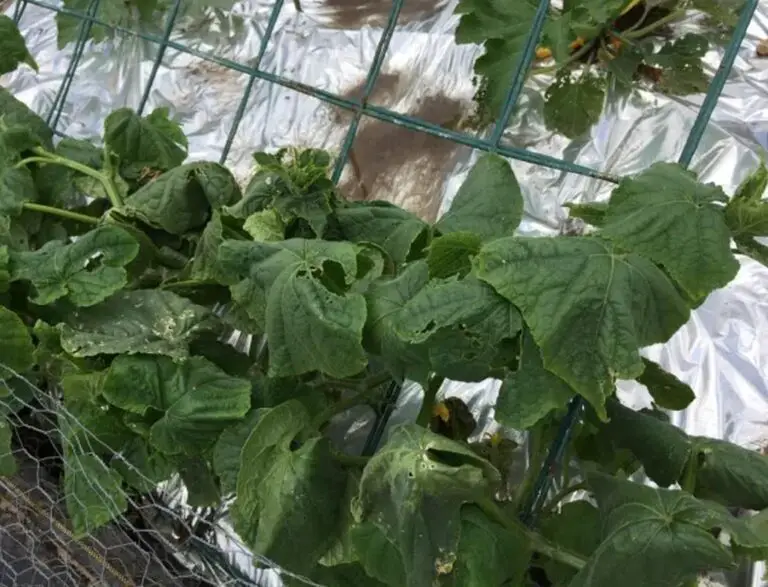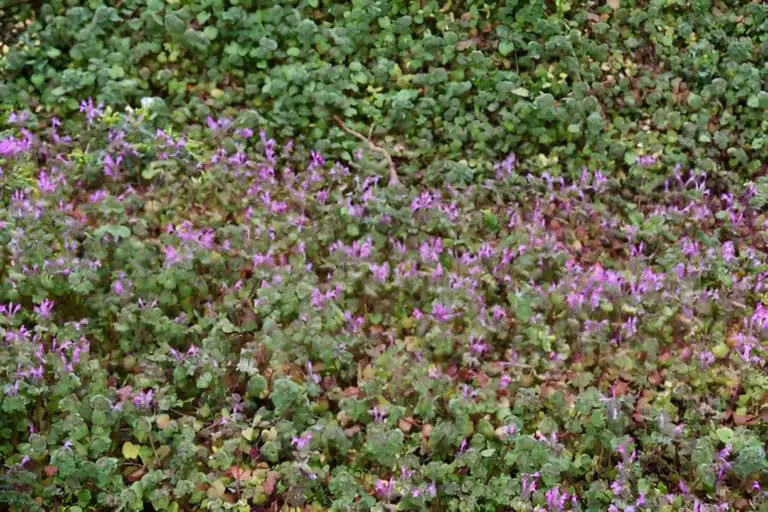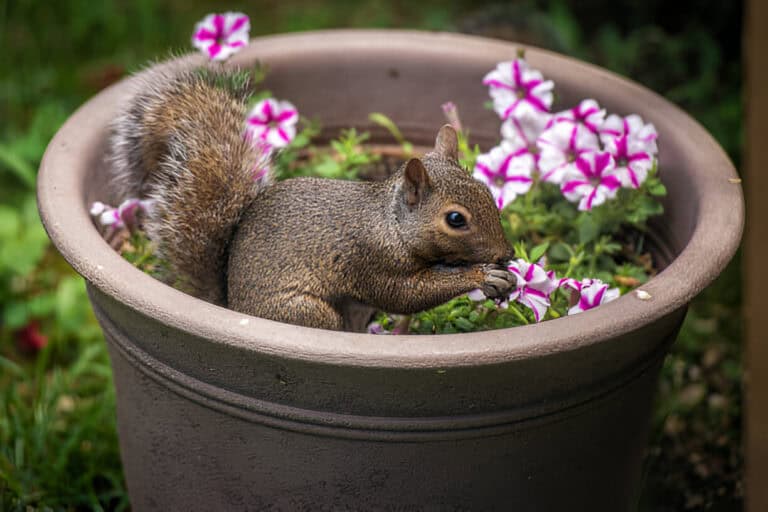Common Jade Plant Bugs – How To Get Rid Of Jade Plant Pests

It’s a plant lover’s nightmare. Pests, bugs, and insects. An infestation can dramatically change the health of your plants. In this article, I will be guiding you through common jade plant bugs and how to effectively treat them.
Jade plant pests and diseases are a common problem and are a nuisance to anyone who has the unfortunate event of encountering them. However, jade plant bugs don’t have to mean the death of your succulent! They are totally treatable and if caught early enough, will only cause minor health issues.
The most common jade plant bugs you’ll likely encounter are mealybugs, spider mites, and aphids. Below I go into more detail on each pest and how you can eliminate them from your home forever!
Common Jade Plant Bugs
Let’s get started with the most likely pest you’ll see on your jade plant…
Mealybugs on jade plant
If you have noticed white bugs on a jade plant, then 9 times out of 10, it will be a mealybug infestation! I’m sure you’ve heard of these annoying pests before. They love succulents and pretty much any indoor plant, but what exactly are they? And what do mealybugs look like?
What Are Mealybugs?
Mealybugs are tiny annoying pests that like to suck the sap from a jade plant’s leaves and grow as they mature. They are so small that 1 alone will go unnoticed. However, mealybugs are always in colonies, and when you have an infestation, you will notice a white, cottony appearance form on your plant. You will also notice your jade plant leaves turning yellow and then the jade leaves turning black.
These white bugs found on a jade plant are a pain because they can easily be mistaken for fungus or mildew. If you think you have a mealybug problem on your hands then you will want to get to work on eliminating them from your home quickly as they spread like wildfire. You should immediately remove your infected plant away from all other houseplants.
Mealybugs are also experts at hiding in all the nooks and crannies of a plant. For a jade plant, this could be under the leaves, or where the leaves join the stem. Make sure you are inspecting your succulent and cactus plants regularly to ensure you don’t end up with a full-blown epidemic.
No one really knows why you get mealybugs, but there is definitely a correlation between having an overwatered jade plant and getting pests, so make sure you are sticking to the correct watering schedule.
How to Get Rid of Mealybugs
There are a number of different ways you can get rid of mealybugs. Pesticides is the main treatment for mealybugs, and a 70% or less solution of isopropyl (rubbing alcohol) is what you’ll want to go for.
Rubbing alcohol is cheap and you can buy it from almost anywhere, but I tend to order MaxTite Isopropyl Alcohol 70% as it’s affordable and works well.
I also find that using a spray bottle makes the process a lot easier too.
You should always be following the instructions on the bottle, but I would always recommend diluting the isopropyl in water to ensure you don’t get leaf burn (phytotoxicity).
The process is really simple, once you have diluted the rubbing alcohol, simply spray it onto your jade plant. Make sure you are getting into all the hard-to-reach areas as this is usually where mealybugs hang out.
If you have caught the infestation early enough, then one round of treatment should do the trick. If not, you’ll notice the mealybugs reappear within 2-3 days, in which case you can spray your succulent again.
You can repeat this process every few days until the mealybugs have finally gone! The great thing about using rubbing alcohol is that it is completely safe for succulents and won’t damage your houseplant.
Learning more about Jade Plant Root Rot
Spider Mites on Jade Plant
Next on our list of jade plant bugs is spider mites! Yuck! These annoying pests are common in South America and can wreak havoc on your crassula plants. They are classified as an arachnid, relatives of spiders, ticks, and scorpions.
What Are Spider Mites?
Spider mites are teeny, tiny red/brown pests that love to suck all the juices and nutrients out of a jade plant. They live in colonies and, just like mealybugs, may go unnoticed for some time. Because of their appearance and small size, it is easy to mistake spider mites simply as some dirt or dust or even just simply thinking your jade plant is turning red! But if you start to notice your jade plant dropping leaves, then you could have an infestation on your hands.
If ignored, then spider mites will continue to colonize, and eventually, you’ll have a dying jade plant to deal with.
Spider mites thrive off the same conditions as succulents—hot, dry temperatures. This is why it is such a common jade plant bug.
How to Get Rid of Spider Mites
Unfortunately, if you have a spider mite infestation, then you are in it for the long run. These annoying pests are stubborn and will take some time to eliminate. However, by using the right products and methods, it is possible to save your wonderful succulent plant.
The most popular and effective method to get rid of spider mites on a jade plant is by using neem oil. This is a common, non-toxic product that pretty much all gardeners praise! Coming from the tree Azadirachta indica, a South Asian and Indian plant, it is a powerful insecticidal oil that will eliminate spider mites.
Neem oil insecticide is applied as a soil drench. Essentially, what this means is that your jade plant will absorb the oil. When the spider mites then begin to feed, the compounds of the neem oil will cause the bugs to stop feeding and will prevent larvae from maturing.
I tend to use Neem Oil by Kate Blanc because it’s affordable and comes in a bottle with a pipette, which makes application a lot easier. One bottle will last you months, and this particular make can be used for your hair, skin, and nails too!
Once you have your neem oil, the process is simple, yet can be quite awkward and sticky (this is why I always get a bottle with a pipette!). You should be applying the neem oil directly onto the spider mites. Because these pests hide in all the nooks and crannies, you’ll want to do a thorough job. I would advise wrapping the bottom of your jade plant in a plastic covering and turning it over so that you can ensure you are properly applying the neem oil underneath the leaves.
You should be repeating this process once every 2-3 days until the infestation has been completely eliminated.
Aphids on Jade Plant
Another annoying jade plant bug is aphids. These are also commonly known as greenfly or blackfly. A pain for any succulent lover, aphids can transmit plant viruses, stunt stump growth, and excrete a sticky honeydew substance, of which sooty mold can begin to grow. If you have an aphid infestation, you will want to work on getting rid of these pests quickly.
What Are Aphids?
Aphids are similar to both mealybugs and spider mites in the sense that they are sap-sucking! They will feed off your jade plant and suck out all of the healthy juices and nutrients. Being slightly larger than the other pests, ranging from 1mm to 7mm, aphids are much easier to spot.
Although they are commonly known as greenfly or blackfly, the species can range in color, such as yellow, pink, or white. Some aphid species cover themselves with a white, waxy secretion. This is annoying as it means they can often be confused with mealybugs or scale insects!
On top of this, aphids feed on the roots of your indoor plants and, if left untreated, will kill your jade plant.
Living in colonies, it is usually very easy to tell if you have aphids, which are visible to the naked eye. Other symptoms will include wilted leaves and a honeydew sticky substance. Ants are attracted to the honeydew that is excreted from these pests, so if you start to notice ants mulling around your plant, then aphids is a good diagnosis.
How to Get Rid of Aphids
If you have aphids on a jade plant, then treating them is simple. The best method is using isopropyl alcohol at 70%. Treating aphids is the exact same process as treating mealybugs!
Make sure you are following the instructions carefully, but dilute the rubbing alcohol in water and place it into a spray bottle. Thoroughly spray your jade plant with the diluted mix and make sure you are getting into all the hard-to-reach areas!
If you have a particularly bad infestation, then you can always try adding some dish soap to the rubbing alcohol and water – this emulsifies the mix making it stick to your jade plant easier.
Aphids will be attracted to moisture, so ensure you are using well-draining soil for your jade plant, and this will help eliminate the infestation.
Other Jade Plant Bugs
So I have discussed in detail the three most common types of jade plant bugs and pests; mealybugs, spider mites, and aphids. However, there are a lot of other pests that can intrude on your jade plants!
Fungus gnats on succulents is also a common problem. These annoying pests are similar to fruit flies and are attracted to soggy soil. I have written about gnats in more detail, including the causes and how to eliminate them. Read the helpful article on how to get rid of fungus gnats on succulents.
Other jade plant pests include scale insects and soft scale. Although they are more uncommon than the above. I haven’t written about these in detail simply because I don’t have too much experience with them, so I wouldn’t be able to advise on the best methods of eliminating them. I have briefly encountered hard scale when I had Christmas cactus bugs, however, I’ve never actually had an issue with soft scale on a jade plant.
| Also check Jade Plant Falls Over! |
Jade Plant Bugs…a Quick Recap!
I hope you have enjoyed reading this article on jade plant pests and diseases. I have outlined for you the three most common types of pests found on crassula plants, and these are:
- Mealybugs
- Spider mites
- Aphids
I also discussed the best treatments for eliminating each pest and have recommended the products that I use. For mealybugs and aphids, you should be using 70% or less rubbing alcohol, and for this, I use MaxTite Isopropyl Alcohol 70%. For spider mites, neem oil will work wonders, and I use Neem Oil by Kate Blanc simply because the bottle comes with a pipette, which makes application a lot easier.
I briefly spoke about other pests, such as fungus gnats and scale insects.
If you have any questions, then feel free to leave a comment and I’ll get back to you.






